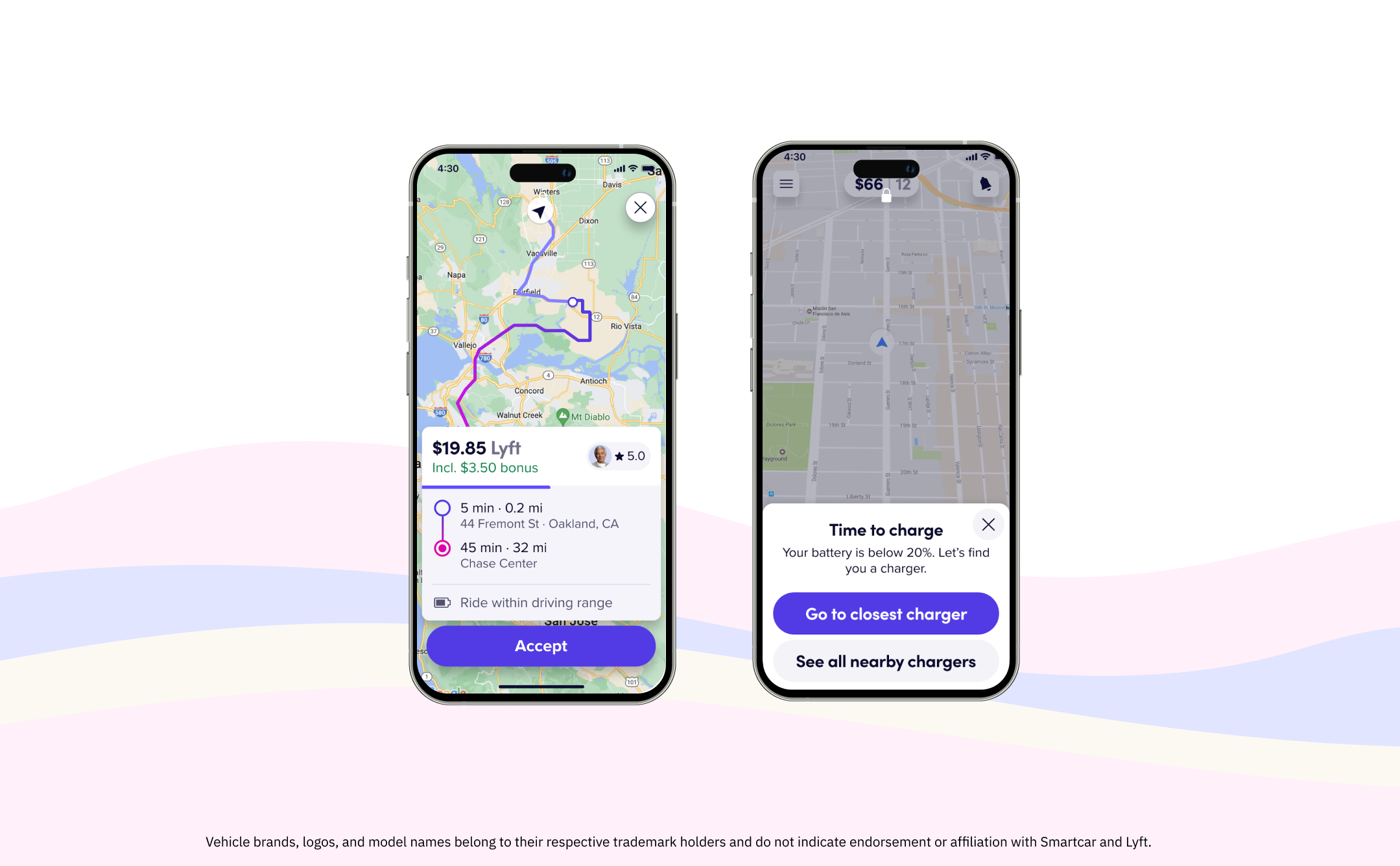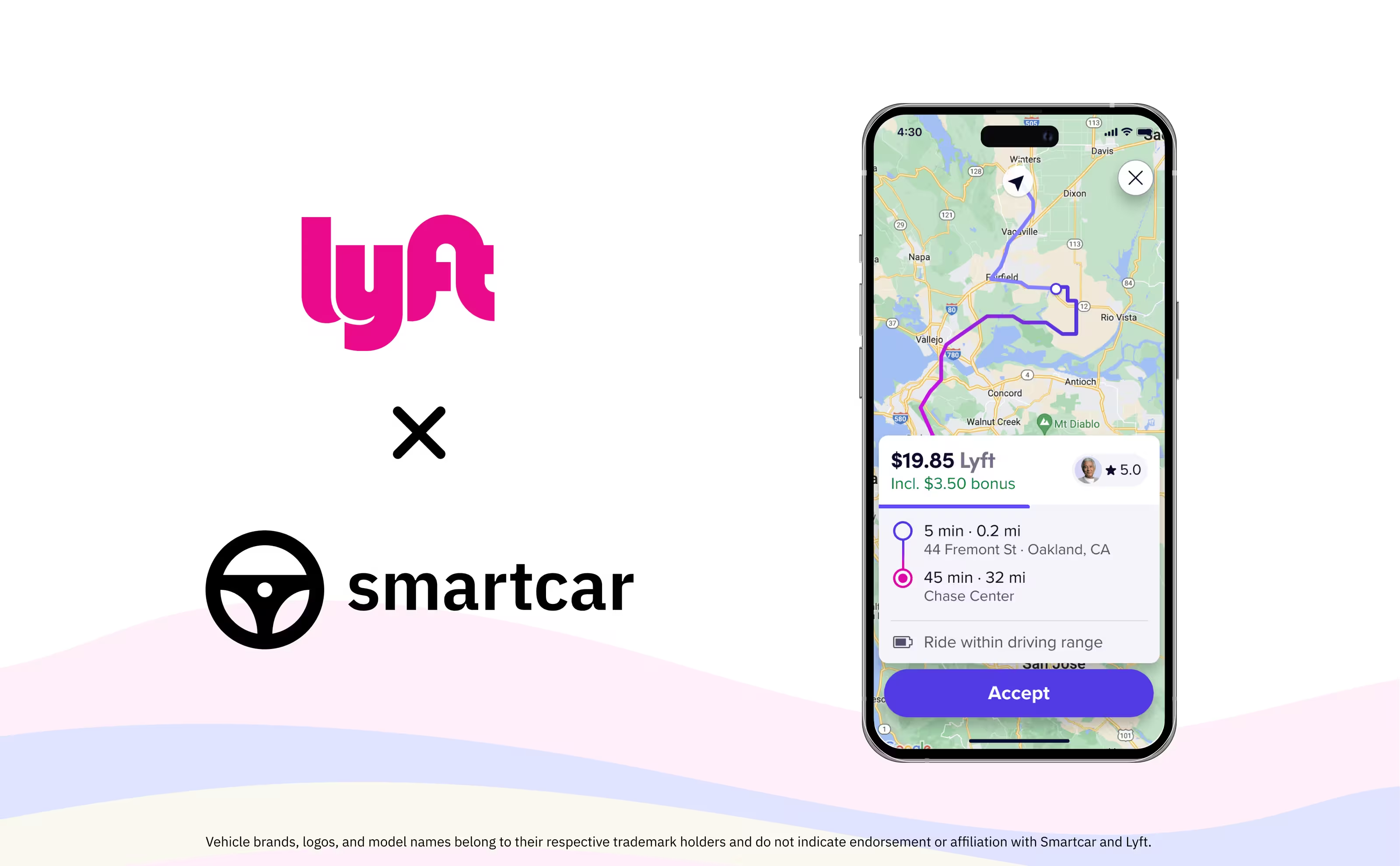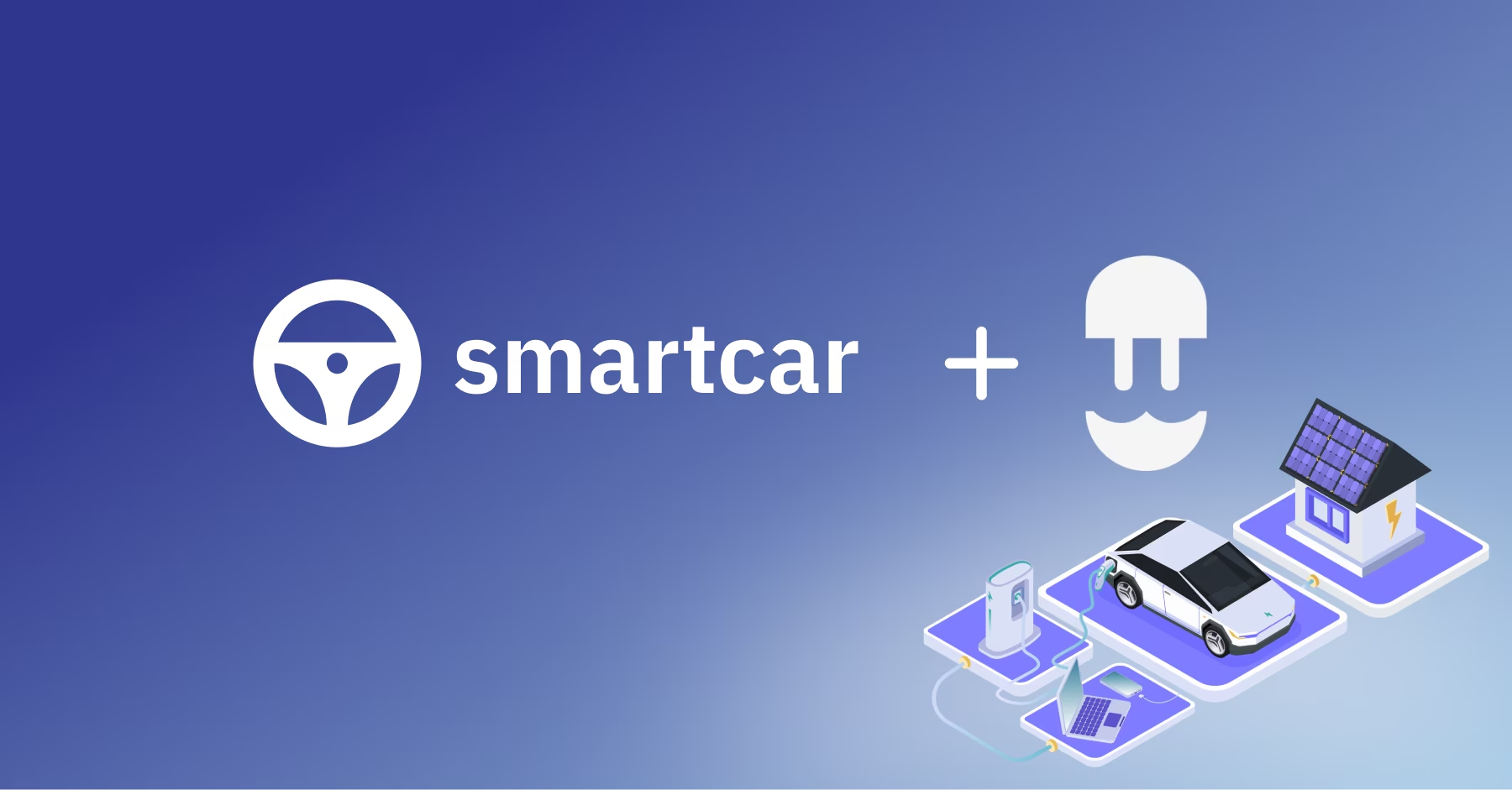San Francisco – Sept. 24, 2024 – Smartcar, the leading API platform for mobility businesses, today announced a partnership with Lyft, one of the largest transportation networks in North America, to tackle range anxiety and help EV drivers accept rides with confidence.
Lyft’s ‘Rides in Range’ feature ensures EV drivers only receive ride requests within their current battery range. It’s now available for EV drivers on the platform with a 20-mile buffer on an EV’s battery range to accommodate different driving styles or route obstacles.
With EV battery level data retrieved via Smartcar, Rides in Range can also alert drivers to charge after completing a trip if their battery level is expected to fall below 20 percent. By combining automatic trip-matching and proactive EV charging reminders, Lyft aims to build an efficient and convenient experience for EV drivers and passengers using the platform.

Range anxiety is the #1 EV pain point for drivers on Lyft
Range anxiety remains the leading concern for EV drivers on the platform who want to avoid the risk of interrupting trips to charge or struggling to look for chargers during longer trips.
With Rides in Range, EV drivers on Lyft don’t have to deal with the cognitive burden of evaluating battery range for each request or deciding to pass on longer trips. Accurate and automated ride assignments with EV battery data retrieved via Smartcar help Lyft drivers take on more trips with confidence, boost ratings, and increase tips from customers.
"At Lyft, we're all about making life easier for drivers on our platform, and we know that range anxiety is a big deal for those with electric vehicles. That's why we're so excited about our new 'Rides in Range' feature, thanks to our partnership with Smartcar,” said Ciara Chow, Lyft Product Manager. “Now, our drivers can take on rides without constantly worrying about their battery levels. It's a game-changer that helps them focus on what they do best – providing great rides for people who need them."
Secure, no-hassle EV range checks for drivers
The feature is automatically enabled for future rides once drivers connect their EVs to Lyft via Smartcar. Lyft’s evaluation criteria included technical capabilities, the overall user experience for drivers, and the ability to scale this feature across the most popular EV models on Lyft and on the road today.
With Smartcar’s consent-based API and immediate onboarding, Lyft can roll this feature out to most of their EV drivers without adding the burden of technical dependencies and security concerns. This one-time setup ensures drivers only share the necessary data permissions with Lyft, maintaining privacy while improving the driver experience.
.png)
“One of the greatest challenges of our time is addressing climate change, and it’s inspiring to see companies like Lyft make impactful commitments to grow electrification on the platform significantly,” said Sahas Katta, CEO and co-founder at Smartcar. “Smartcar is thrilled to partner with Lyft to accelerate this shift by enhancing the EV experience. This is just the beginning, and we look forward to building more solutions that make the transition to EVs seamless and efficient.”
Building a reliable and emission-free future for rideshare
By optimizing ride assignments based on battery range, Lyft hopes the ‘Rides in Range’ feature will increase matching speed, enhance the passenger experience, and reduce charging interruptions during trips.
This partnership underscores Smartcar and Lyft’s shared commitment to a sustainable future by supporting EV adoption and addressing the pain points that deter drivers from going electric. With more EVs on the platform providing seamless trips, Lyft can further its goal of reaching 100 million EV rides on the platform by the end of 2025.




.jpg)

